 [Summary] [Summary] |
Ré island |
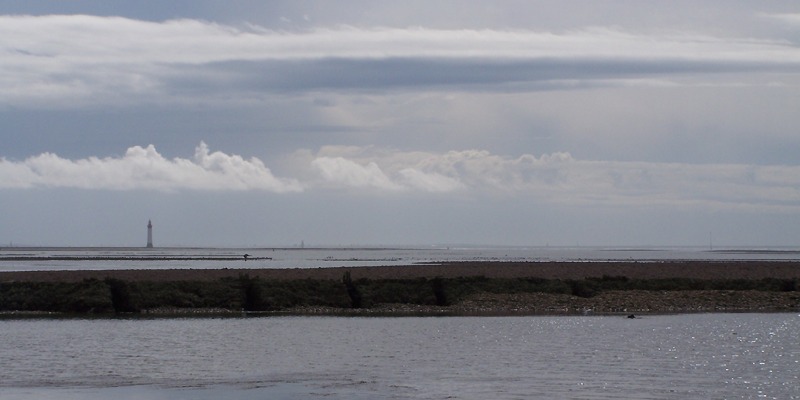 |
 This is the northernmost of the four islands. The second in width, it is flat (max. height 20m) and quiet. During the middle age, the vast majority of the island was the property of an abbey. Intertidal grounds are wide, immense. The southwestern side is covered with rocks and stones, the northeastern one is sandy, and muddy. Lighthouse off Chauveau Point (spot 01). |
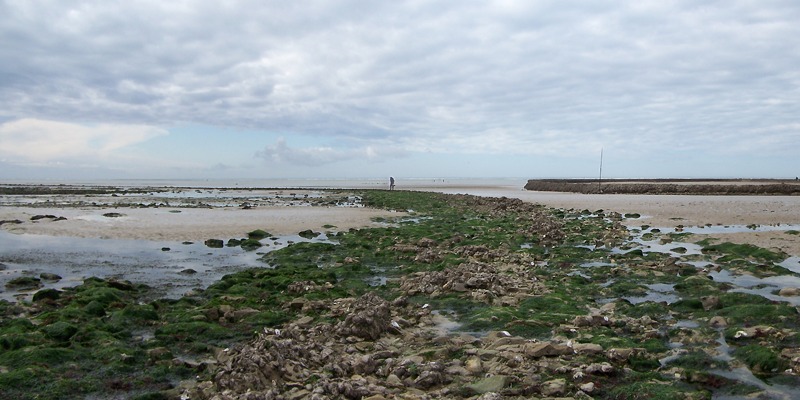 |
 A ruined pool near Chauveau Point. This area, especially near the lighthouse, is a famous shelling spot. |
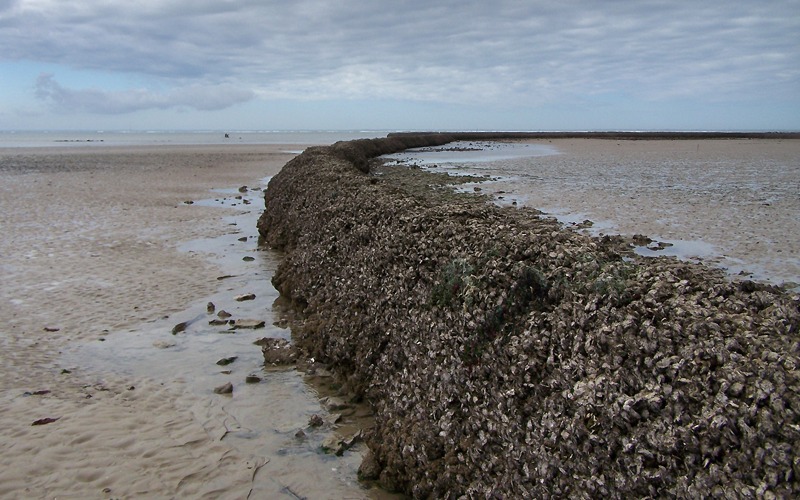 |
 The walls of this pool are covered with oysters, which form a strange skin, ever growing, solid and dangerous. |
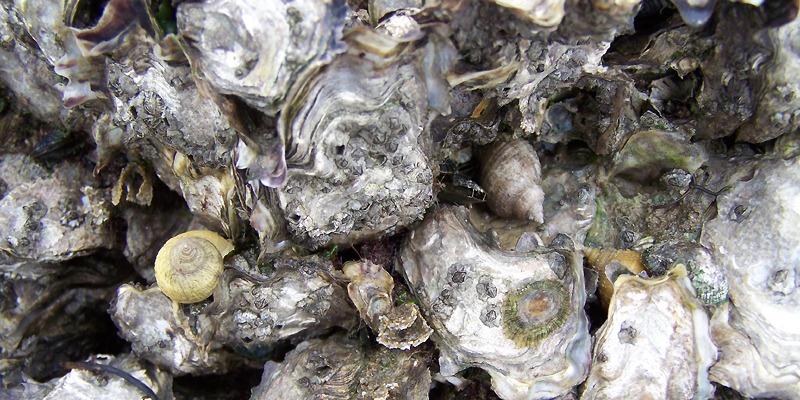 |
 Detail of a wall: Nucella lapillus (Linnaeus, 1758) on its favoutite food. Its form "imbricata" is dominant in oyster clusters. Detail of a wall: Nucella lapillus (Linnaeus, 1758) on its favoutite food. Its form "imbricata" is dominant in oyster clusters. |
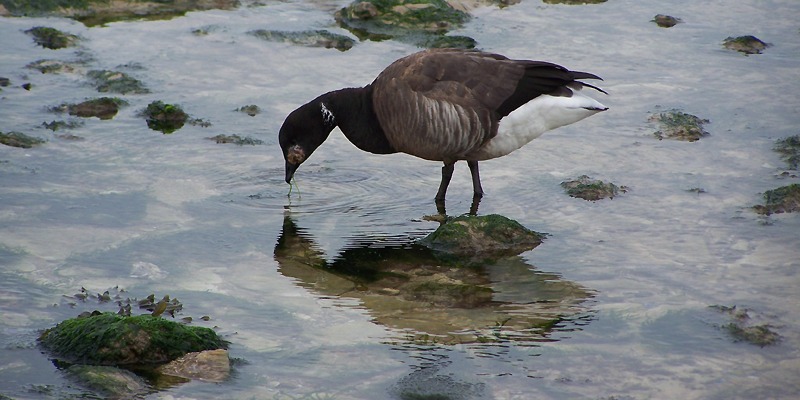 |
 A Brant, or Brent Goose, Branta bernicla (Linnaeus, 1758), at low tide in a pool. This Anatid loves algae. A Brant, or Brent Goose, Branta bernicla (Linnaeus, 1758), at low tide in a pool. This Anatid loves algae. |
 Wildlife at Sainte-Marie: Wildlife at Sainte-Marie: |
| |
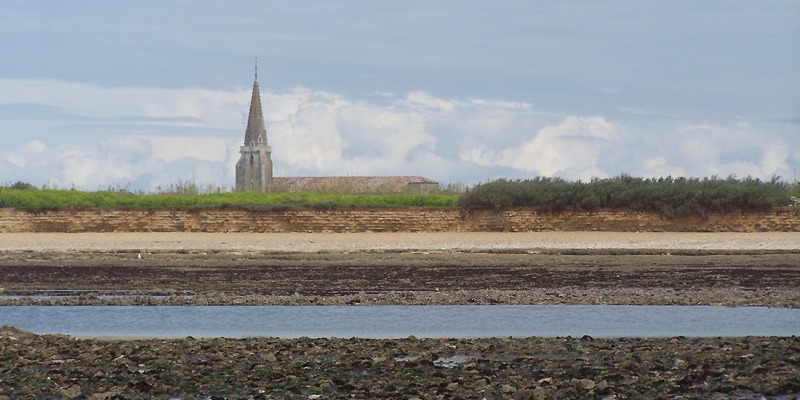 |
 Spot
02. The church, pictured from the Jalousie tide-pool. All the
island is built on a thin limestone layer. |
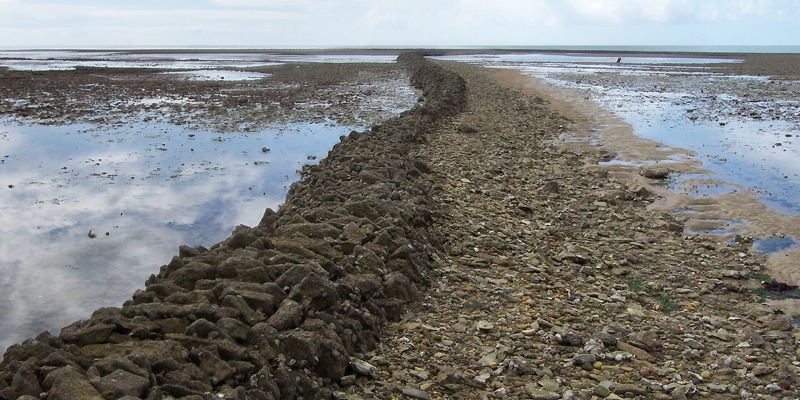 |
 A
wall of Jalousie. No cement, only stones adjusted in a semicircular
section of 4 feet max. (Colbert's enactment). Fourteen pools are maintained
and work today; but they were ten times more a century ago. |
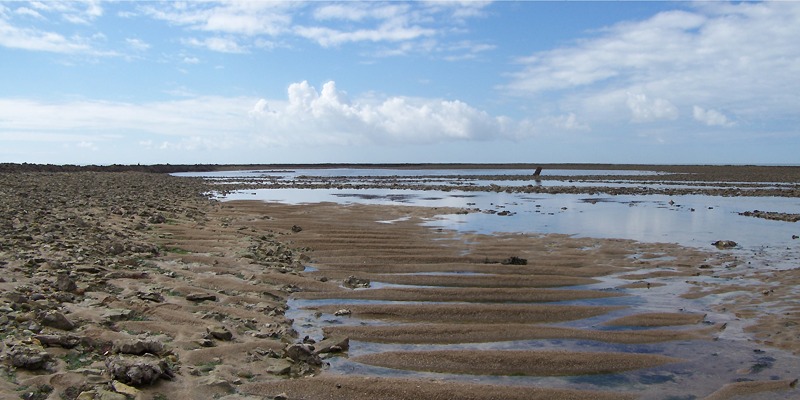 |
 In
the center of Jalousie. The first pools were built during the
tenth century. Some of them still exist. |
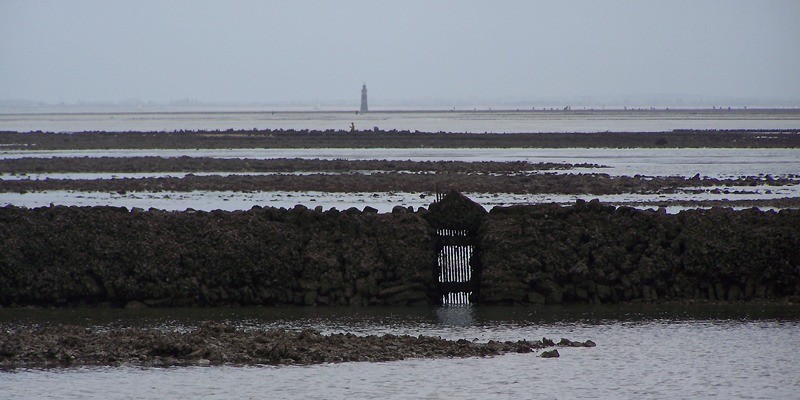 |
 A
gate. Large pools had five, six, ten of these filtering doors. Water escapes,
but no large fishes. |
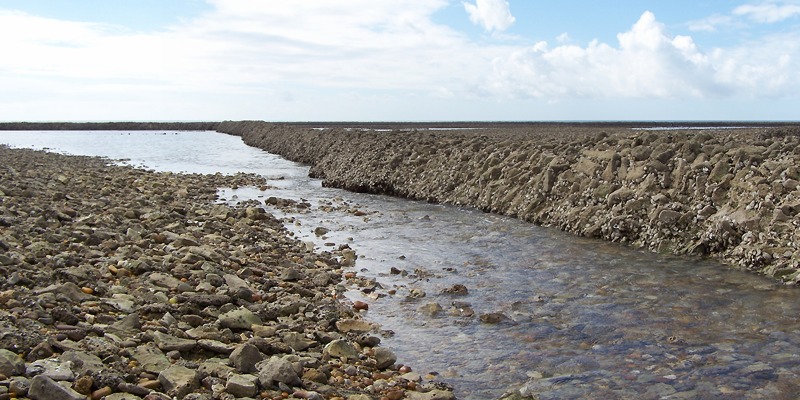 |
 The intertidal flats off Sainte-Marie draw a lunar landscape, often impressive. |
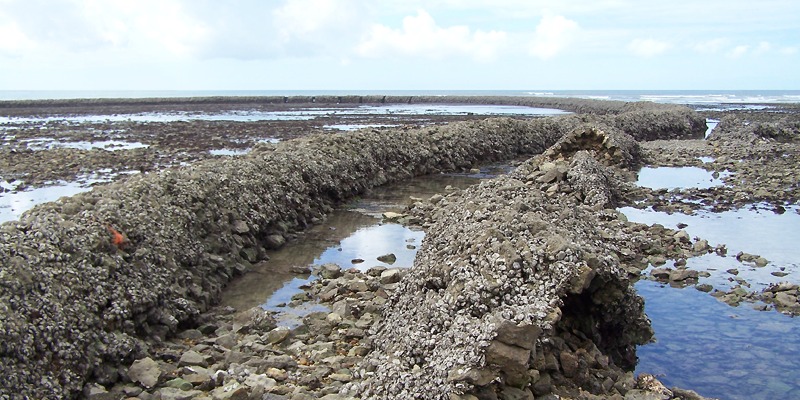 |
 A channel between two pools. |
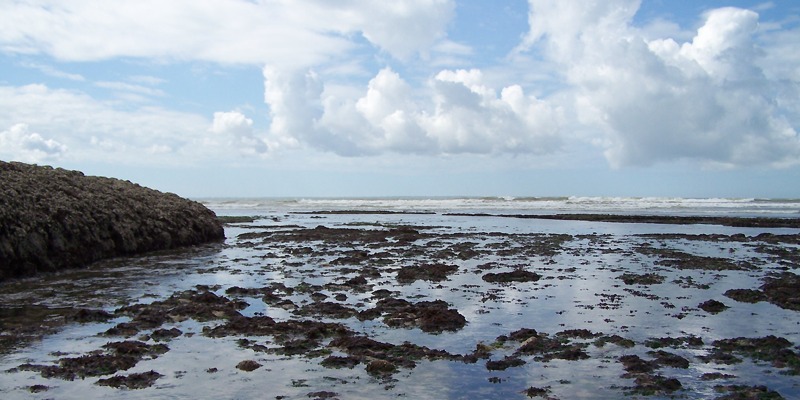 |
 The
end of Jalousie, near the sea. This area, often under water,
hosts the first Ocenebra erinaceus. This species usually lives
deeper. Here, most of the specimens collected are crabbed, and small. |
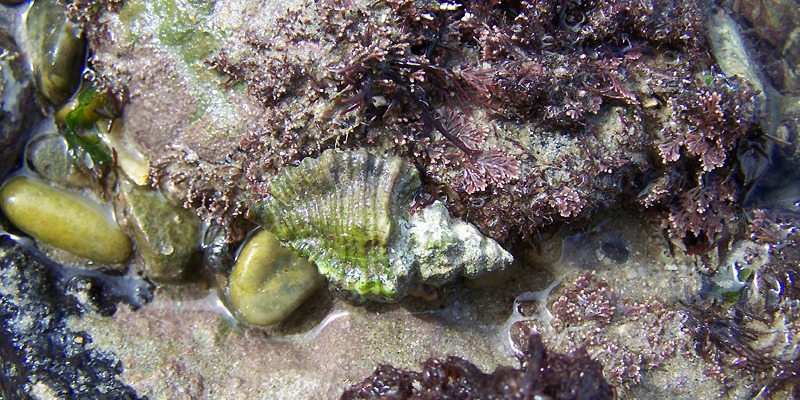 |
 A living specimen, uncommon intertidally on this coast. 37mm. |
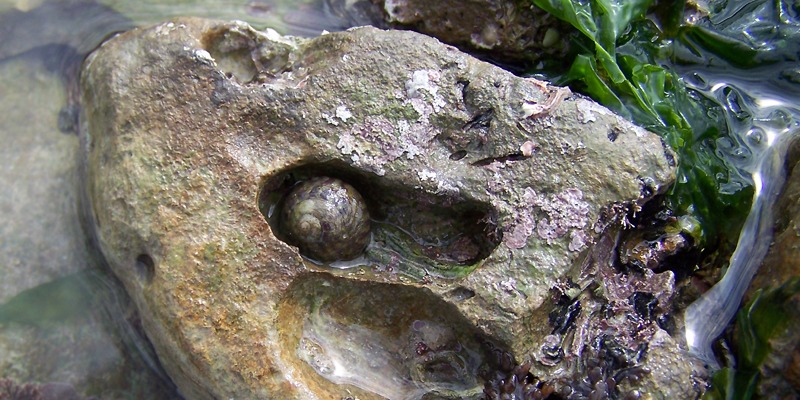 |
 Gibbula pennanti Gibbula pennanti (Philippi, 1846) in its lodge. |
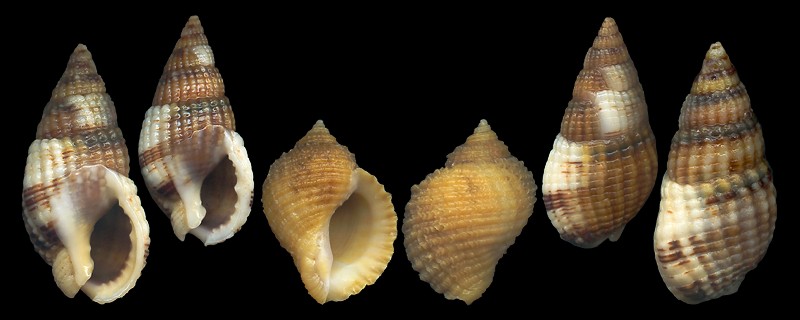 |
 Nassarius reticulatus Nassarius reticulatus (Linnaeus, 1758) & Nucella lapillus (Linnaeus, 1758), at the foot of the wall, in lower intertidal zone. |
 On the northeastern coast: between La Flotte and Rivedoux On the northeastern coast: between La Flotte and Rivedoux |
| |
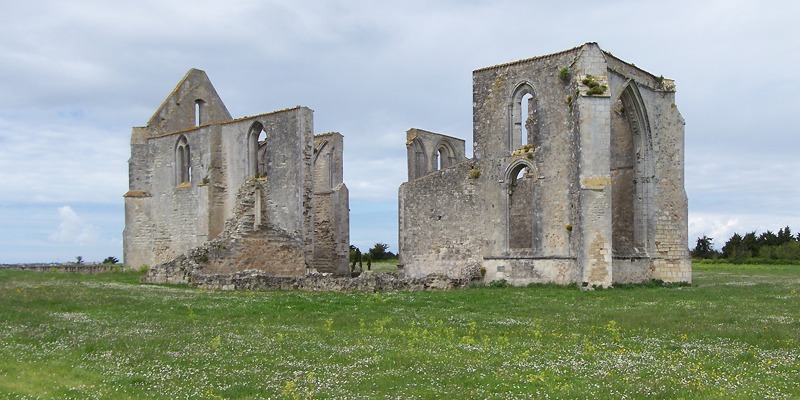 |
 Spot 03: the remnants of the cistercian abbey Notre-Dame de Ré, also known as "Abbaye des Châteliers". Founded in 1156, it was located near the main docking place of the island. The majority of the lands and woods, the fisheries, ponds, boats, nets etc. were the property of the monks. The abbey was destroyed and rebuilt many times, and abandoned in 1793. |
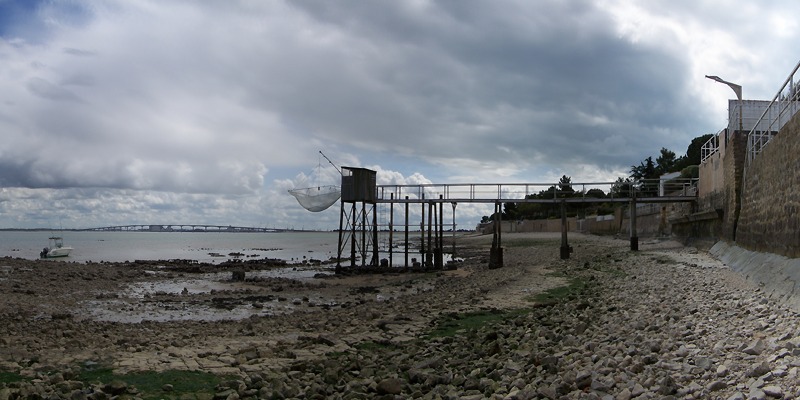 |
 Spot 04: carrelet at La Prée. Turbid water, muddy bottoms; this area is devoted to conchyliculture. The buildings at right, after the wall, are oyster farms. The bridge in the background connects the island to the continent. |
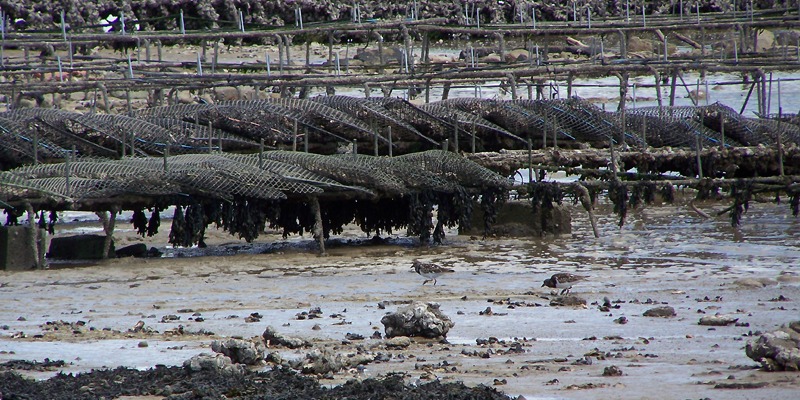 |
 Arenaria interpres Arenaria interpres (Linnaeus, 1758). Turnstones can eat many different things, worms, minute crustaceans, molluscas, larvae. Lightweight (80 to 110g), they can walk on the muddiest grounds, a skill that is refused to Ocenebrinae. |
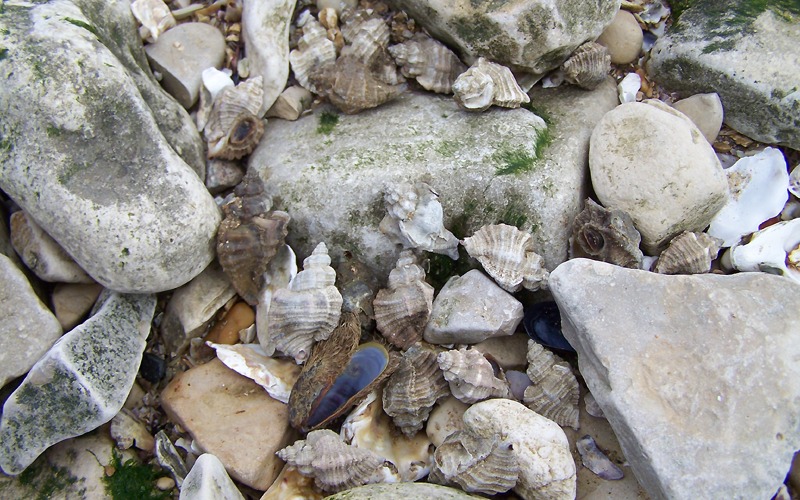 |
 Dozens of Ocenebra erinaceus waiting after flood in the pebbles at the extremity of an intertidal road. They are not alone: in this picture, at least three Pteropurpura inornata keep them company. Between the shore and the beginning of he mud, along this road, the average ratio between the two species was of 1 inornata per 20 erinaceus.
 Notice the little Modiolus
barbatus (Linnaeus, 1758) washed ashore, among its worst ennemies.
500m offshore are oyster-parks and mussels Bouchots, on the Platin mud
flat. Strangely, the Drills were all concentrated along this road. |
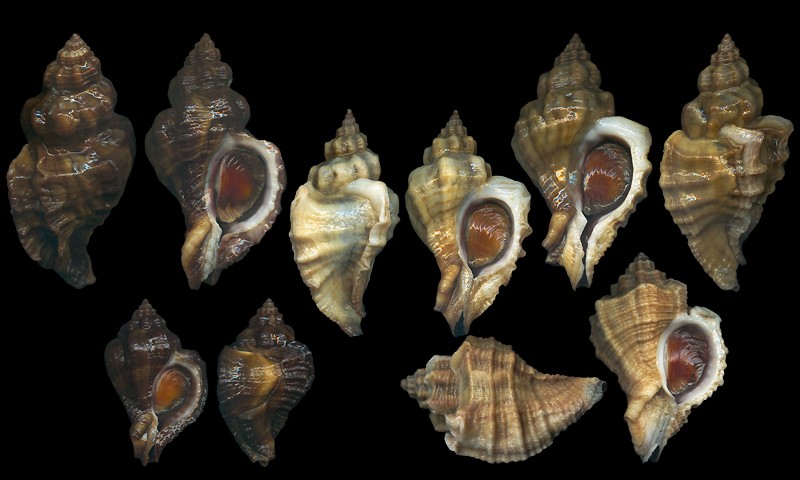 |
 Samples of Pteropurpura inornata collected in this place. 32 to 50mm. The specimen at bottom-right shows odd features: it has the operculum, wings and spines of inornata, but the colour and the scaly sculpture are those of erinaceus. |
 Where do you wish to go now? Where do you wish to go now? |







































